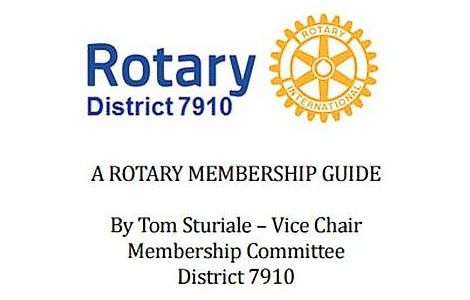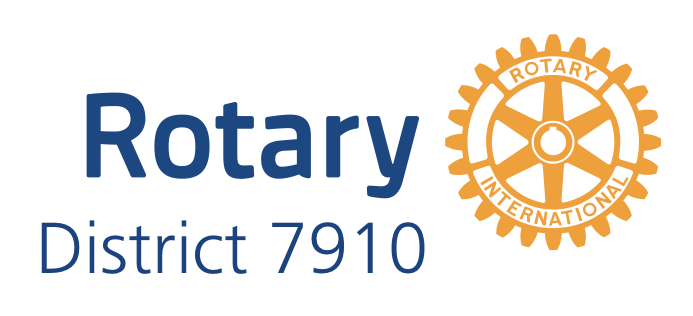Membership Corner - May 9, 2016
Membership Corner: Status of Rotary membership in District 7910
By Tom Sturiale
Thanks to the diligent efforts of many clubs, we have managed to offset the effects of attrition and stabilized our membership at the same level as last year. While this is no small effort, there is still much work to do. A question remains as to what extent clubs accept the premise that an increase in membership is a desirable and necessary objective.
Notwithstanding the fact that Rotary International has declared membership as the No. 1 priority of all clubs and that clubs with more members are better prepared to serve their communities, there are still many clubs with low memberships. As discussed in several other “Membership Corner” articles, there are many reasons for this: demographics, venues, history, leadership, attitudes, costs, public relations, etc. However, except for will and determination, all these negatives can be overcome with careful planning and execution.
It seems clear that a reasonably sized club, albeit an arbitrary number, will be more effective from many points of view. Larger clubs are better able to serve their communities through more effective fund-raising, by having more folks available to share in the work of projects, by having a larger population of members to serve as leaders and officers, by increasing their chances of long-term survival and by promoting the idea of Rotary throughout their areas.
These comments are in no way intended to denigrate the excellent work done by all the clubs of any size in our district. In fact, the reports of all of the district governors of the past few years continue to express awe and inspiration as they visit each and every club, every year. It is quite inspiring to witness much of the work done by smaller clubs. It still begs the question: If these clubs had more members, would they be able to do even more impressive work in their communities?
A comment that is repeated many times in these articles indicates the difficulty in developing a continuous and consistent membership effort based on the consensus of club members. Almost everything else we do in Rotary pales in comparison to the effort and the difficulty of increasing membership. Membership is a tough job!
Here is an idea for club leaders to consider. What if a District Resource Team is available for clubs to call on for help in their membership efforts? Establishing a DRT is easy. Getting clubs to sign up may be a bit more problematic. If clubs really wanted to increase their membership but had major issues to overcome, would they feel comfortable calling on a DRT for help?
We have almost 30 of the 52 clubs in our district with less than 30 members each. If each of those clubs grows to a level of at least 30 members each by the year 2020, we would have 250 more members in our district. That is a target worthy of consideration.
Should we establish a district objective of “30 by 20?” Are you willing to commit? What do you think?
Closing thoughts
We need to keep experimenting with our meeting agendas to maintain members’ interests and to encourage attendance. Meetings need to be fresh, exciting and interesting. This will also assist your club’s Membership Committee chair and members in attracting new members to the team. Please let me know of your ideas, comments and stories about Membership you would like to share. E-mail me at tsturiale36@gmail.com.
April 2016 articles:
April 18: How to propose a new member for Rotary
April 25: What would Paul Harris do?
 "A Rotary Membership Guide" is a collection of "Membership Corner" articles written for this weekly newsletter during the 2015-2016 Rotary year, which began last July 1. It is intended to offer an idea or thought each week aimed at stimulating discussions, questions and actions to effectively increase membership at all our clubs. Click here, to download this 52-page "Guide," in Word format.
"A Rotary Membership Guide" is a collection of "Membership Corner" articles written for this weekly newsletter during the 2015-2016 Rotary year, which began last July 1. It is intended to offer an idea or thought each week aimed at stimulating discussions, questions and actions to effectively increase membership at all our clubs. Click here, to download this 52-page "Guide," in Word format.


.jpg)